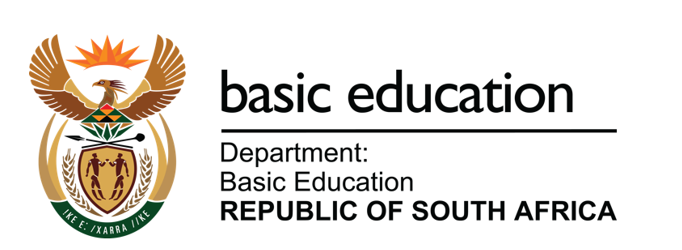
- Introduction
The National Education Collaboration Trust (NECT) was founded on the basis of collaboration among business, government, labour, and civil society. To date, the NECT has been able to raise about R2,5 billion in funded programmes from these collaborations[1].
Despite the teething problems in funding encountered when it was first launched, by 2016 the NECT had built enough muscle to mobilise funding owing to quick turnaround time for implementing projects. Owing to this notable achievement, other collaborators took note and approached the NECT to execute special projects that sought to increase efficiency, success, and impact. One such special project is the South African School Administration and Management System (SA-SAMS) Modernisation Project, which drew the collaborative funding between the state, philanthropy organisations, and the private sector[2].
This article profiles the pros and cons of the collaborative funding model for SA-SAMS and identifies and discusses lessons that emanate from the implementation of the project.
- What is “Collaborative funding”?
Let’s start with understanding the operative term first – collaboration. Collaboration is defined ” as “working jointly with others or together especially in an intellectual endeavour”[3]. This translates into a process through which groups or organisations work together towards achieving a mutually beneficial outcome. A number of factors may be collaboration catalysts – a problem, a shared vision, and a desired to name but a few[4].
Flowing from the collaboration interpretation above, the collaborative funding model description from other sources is accounted for as either “pooling of funds from national or local foundations and philanthropists for organisations supporting similar goals”[5], or is seen as a way “to align … philanthropic giving based on shared long-term goals, geographic areas of interest, beneficiary populations, or some other commonality”[6]. Collaborative funding therefore enables the participants in the relationship to “magnify their capacity to address large-scale social, economic, and environmental challenges and better contribute to change”[7]. Collaborative funding can therefore be a key to creating systemic change by building resources and momentum.
With this discussion in mind, what are some of the pros and cons that come to mind with the insight garnered so far in the journey for the modernisation of SA-SAMS?
- Pros and cons of collaborative funding – a case of SA-SAMS
According to the observations made by the NECT stakeholders over the years, the growing interest in the collaborative funding on the special projects can be attributed to the following:
- The special projects are seen as more transparent and provide increased accountability since the funding is ring-fenced to the project;
- The private sector funding tends to be more leaning towards special projects that add to their ESG (environmental, social and governance) initiatives, especially if these boosts their philanthropy efforts, and performance scorecards or reporting requirements;
- From a contracting point of view, special projects arrangements are more likely to be more implementable as they have clear deliverables and milestones as compared to other organisational core programmes.
- About SA-SAMS Modernisation
The SA-SAMS is characterised by the following aspects:
- It is a core school management and administration system used in the public schools in South Africa.
- It consists of 13 modules that capture all school related information on learners, teachers, and the school. The data on the system is then used as the source for several other systems in the DBE, such as the Learning Unit Record Information and Tracking System (LURITS).
- It is an old technology platform supported by Visual Basic 6 (VB6) with a backend Access database. The technology is no longer supported by Windows and computers with Windows 10 and later versions experience problems running this application.
- Copies of the system reside at a school level, where data is input. The system is standalone, which makes collection of data costly and time consuming.
The SA-SAMS Modernisation Project was launched to replace the current SA-SAMS solution with a modernised one[8].
- The Collaboration
In 2018, the temporary Trustees of NECT, the DBE, the First Rand Empowerment Foundation (FREF), the Michael and Susan Dell Foundation (MSDF), and the ELMA Philanthropies Services Africa (ELMA) concluded and entered into a Memorandum of Understanding (MoU) to define the basis on which the SA-SAMS Modernisation Project will be implemented and outline the roles and responsibilities of the partners of the Project[9].
According to the MoU signed, the total amount of collaborative funding to be raised was R100 million. The component of private sector funding required to be raised by the NECT to complete the Project was estimated at R60 million rand split equally between private funding from FREF, MSDF and ELMA. The contribution of public funding from Government would be R40 million over two financial years[10]. The latter was split between the DBE (R20 million) and the nine Provincial Education Departments accounting for the balance (R20 million) split based on the learner headcount per province.
- What were the pros and cons of this collaborative model and what lessons can be learnt?
The collaborative funding model for implementing the SA-SAMS modernisation projects proved to have several pros and cons. Here are some of the key advantages and disadvantages noted to date:
- Pros:
- Joint risk-sharing: The collaborative funding model employed between the partnership allowed for the spreading of financial risk between the parties. The R60 million funding that the NECT raised on behalf of the DBE from the private donors for the implementation of SA-SAMS modernisation reduced the financial burden that would otherwise have fallen to the sector over a two-year period.
- Increased speed of delivery: Collaborative funding models, especially where private funding is involved can enhance the efficiency of releasing funds for the delivery of infrastructure projects for quick service delivery once agreements have been made on clear deliverables and timelines. Based on the pooled funds, the SA-SAMS benefited from early fund releases from all partners as and when milestones were met.
- Increased funding access: The private sector’s involvement in collaborative funding model was able to provide funding resources to the SA-SAMS project to finance other project requirements to accelerate the project implementation. This was in instances where the public sector would have required consultative authorisations before proceeding, leading to possible delays in the process.
- Multiparty governance structure: Using collaborative funding model called for inclusive governance structure which was representative of all the collaborators. This entailed improved coordination and reporting mechanisms, leading to transparency and risk management in accounting for funding utilisation.
- Cons:
- Self-interests of private funding: Collaborative funding can collapse where public-private funding interests and “way of doing things” are misaligned. Unless clearly defined, it is often common practice for private funding partners to base their continued involvement in funding on defined expectations based on their interests. A case in point for SA-SAMS project was when MSDF and ELMA withdrew their funding in 2020, citing “an opportunity cost” when the DBE through NECT could not move quick enough to appoint a technical vendor to proceed with the modernisation requirements of the project[11].
- Lack of full comprehension between private and public internal workings: There seems to be a disconnect between how government and private sector works when it comes to decision-making and authorisations, especially related to procurement or governance. The issue of SITA bid cancellation in 2019 , notwithstanding that it was lengthy, but duly informed by the Due Diligence process called by DBE, as well the cancellation of the NECT bid process as a result of the serious reservations that were placed by the NECT Board and DBE on the non-suitability of the selected vendor, all led to the private funders pulling out. This pointed to a disconnect between public and private sector funding arrangements informed by all eventualities.
- Inflexible public sector procurement processes: Special projects like SA-SAMS will find it hard to attract collaborative funding due to public sector stringent procurement regulations. A myriad of procurement and governance processes involving multiple inter-governmental players makes it impossible to take quick turnaround as it involves different layers of decision-makers. This makes it unattractive for other private funders to get involved as this is perceived as complex and time-consuming.
- Lessons learnt
Given all the experience and insights so far in the journey for SA-SAMS modernisation project implementation, what are the main takeaways or important lessons that have been gleaned? Three important takeaways emerge:
- Understand and document all co-funders mandates
Private sector and philanthropic funding always bring with it mandates from shareholders and scorecards to be met. Develop an inclusive process to understand the collaborating partners’ respective mandates. Keep co-funders’ respective home boards aligned, appraised of project activities, and engage in proactive stakeholder management that ensures full and consistent support from each co-funder’s home base.
2. Agree upfront on appropriate governance and procurement model that covers all aspirations
Given interested investments into the project from different funders, arriving at a decision-making structure that accommodates all aspirations will remain a challenge. However, all parties must agree up-front on an ideal governance and procurement model that will work for the collaboration. Having these difficult conversations from the onset will ease tensions down the road when things don’t go faster as a result of certain governance or procurement issues that have to be resolved.
3. Evolve and adapt
For first collaborative funding projects, it might be important for all parties to make deliberate effort to see to it that these pioneer projects are successful. For this to happen, they might need to ease and cede to some of their demands respectively. The public sector might choose to relax its stringent governance and procurement regulations for special-ringfenced projects with explicit written submission to National Treasury for such. For the private sector, there is a need to familiarise themselves closely with the requirements of public legislation like Public Finance Management Act (PFMA) which govern procurement in the public sector. Going this way might set a precedent that would make it easier for both public and private partnerships to attract additional philanthropic investment at friendlier terms in the future.



One response to “Pros and cons of collaborative funding model for public/private partnerships – a case of NECT in implementing South African School Administration & Management System.”
All in a day’s work.